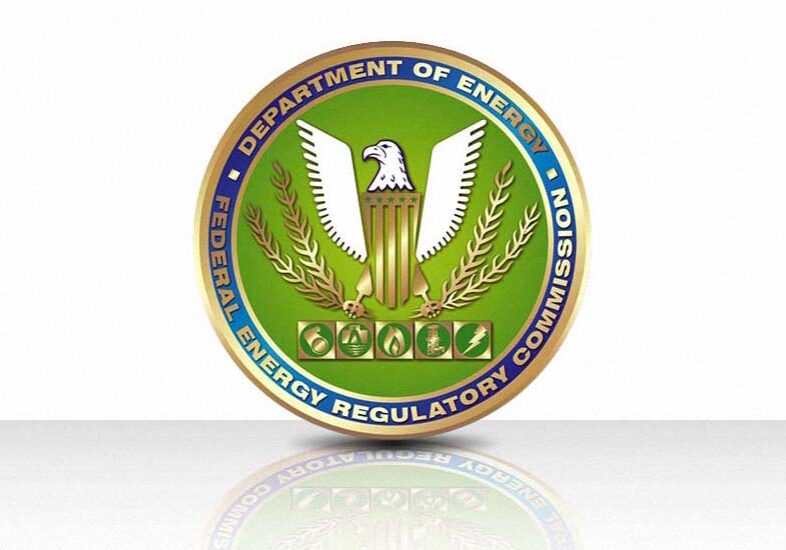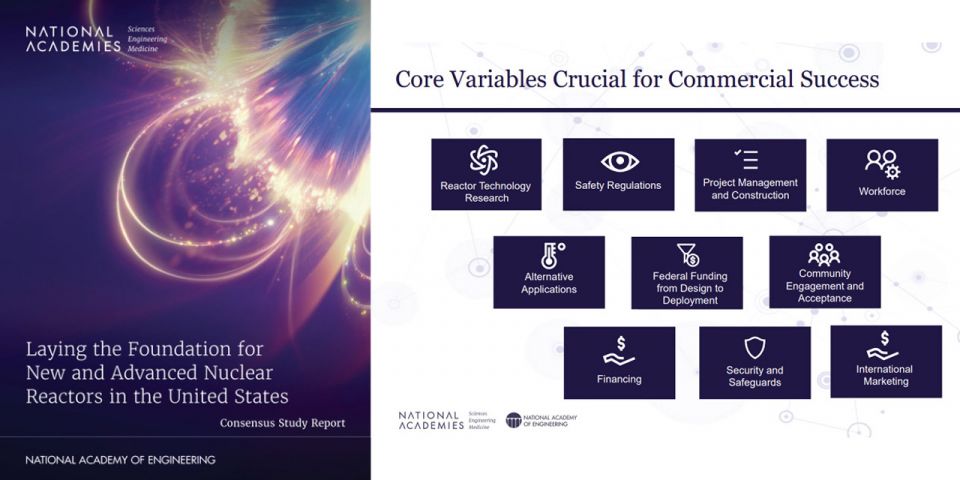The economics of wind power
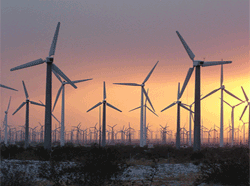 It is often stated that since no one can charge money for the wind, wind-generated electricity is free. This is not true. A modern wind turbine, which can generate 2 megawatts of electricity (MWe) when the wind is blowing, costs about $3.5 million installed. Five hundred of these turbines installed at a wind farm, to be able to generate 1000 MWe, would cost $1.75 billion. Add in other costs, such as for operation and maintenance (O&M) and transmission lines, and the total sum could match the approximate $4 billion required to build a nuclear plant.
It is often stated that since no one can charge money for the wind, wind-generated electricity is free. This is not true. A modern wind turbine, which can generate 2 megawatts of electricity (MWe) when the wind is blowing, costs about $3.5 million installed. Five hundred of these turbines installed at a wind farm, to be able to generate 1000 MWe, would cost $1.75 billion. Add in other costs, such as for operation and maintenance (O&M) and transmission lines, and the total sum could match the approximate $4 billion required to build a nuclear plant.
All of these costs need to be recovered from customers or taxpayers. So, the cost of wind-generated electricity is not free.
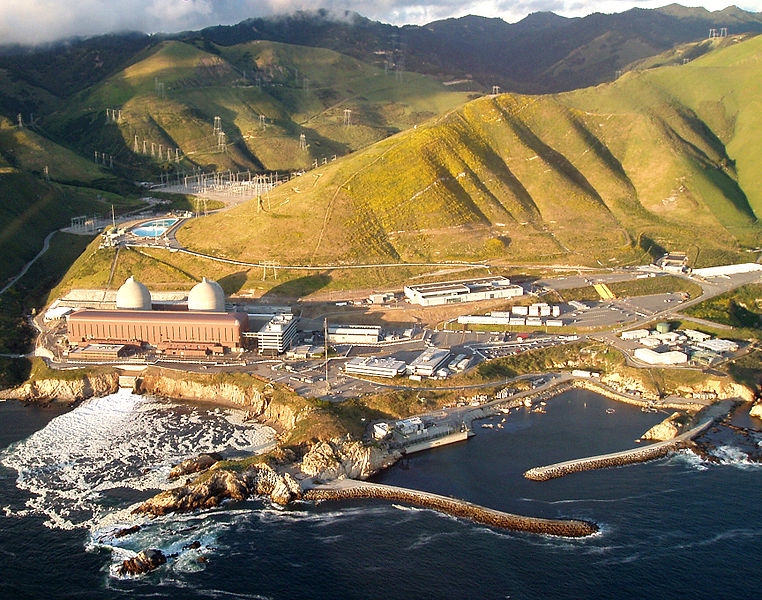
Diablo Canyon nuclear power plant
A typical wind farm would generate electricity about 30 percent of the time, and not necessarily at times when electricity is needed. There is a very big difference between intermittent sources of electricity, such as wind farms, and baseload sources, such as nuclear power. The argument that nuclear power also has down times is true, but these refueling and maintenance outages are largely planned during times of low electricity demand (during spring and fall).
As I mentioned in Fitting Wind onto the Electricity Grid, my recent ANS Nuclear Cafe post, wind turbines by themselves do not add electrical capacity to a grid. They must be paired with other generators of equivalent power to compensate for wind variations and for the stability of the electricity grid.
This pairing-wind and backup-has limits because of the huge rapid variability of wind that must be compensated for by the backup power source. It is estimated that this pairing can account for only 20 percent of the capacity of the grid. This means that wind can be only 6 percent of the generation (.20 x .3). This limit has already been reached in Europe by countries such as Germany and Denmark.
Wind power fuel tradeoff with natural gas
Since wind power is a fuel saver, one of the questions that might be asked is exactly how much fuel is saved, or put another way: What is the economic tradeoff between wind farms and the fuel saved, such as in a natural gas power plant?
A simplified comparison shows that the worth of the natural gas saved is less than the cost of building and operating a wind farm. The details of the cost tradeoff are shown at the end of this article.
There are some additional costs that make the comparison even worse:
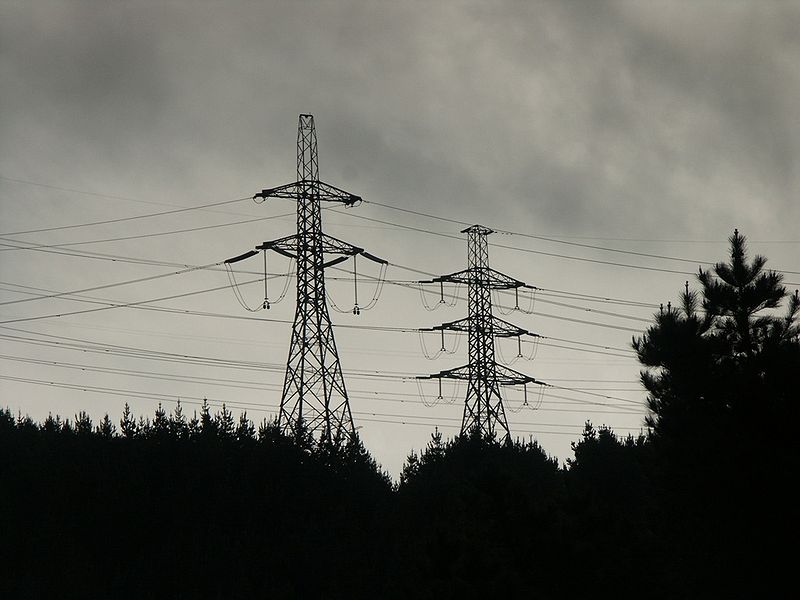 Transmission losses. Since the transmission lines from a remote wind farm are likely to be longer, a wind farm may need to be larger to provide the same amount of power as the backup. For example, if we assume a 10-percent electricity loss per 100 miles, a wind farm 500 miles away needs to be double in size.
Transmission losses. Since the transmission lines from a remote wind farm are likely to be longer, a wind farm may need to be larger to provide the same amount of power as the backup. For example, if we assume a 10-percent electricity loss per 100 miles, a wind farm 500 miles away needs to be double in size.- Transmission line cost. A remote wind farm will need expensive transmission lines to deliver the electricity. For example, a proposed new 12 000-MW high voltage transmission line connecting wind sources in New England would cost $19 billion-$25 billion[1]. Transmission line cost may not be directly born by the power provider, so these costs may be hidden from any direct cost comparisons, but ultimately they are still paid for by the consumer or taxpayer.

Pickens
An illustration of how the pairing of wind and natural gas has failed recently due to economics was provided by T. Boone Pickens, when he tried to send wind-generated electricity from Texas, which he called the "Saudi Arabia of wind", to California. His attempt at promoting natural gas by pairing it with wind seemed like a good idea and got much television advertisement (his emphasis was on the wind portion of the pairing, as it seemed a more popular idea). His strategy, however, depended on gas prices at $9 per million BTU. The price has since dropped to $4 per million BTU.
There appears to be no economic justification for windmills when paired with natural gas. If the price of natural gas is low, then the worth of the saved fuel does not compensate for the cost of the wind farms. If the price is high, then the use of natural gas is not competitive with other forms of power generation. Although natural gas prices without windmills may be competitive today, there have been price fluctuations by as much as a factor of two as recently as a few years ago.
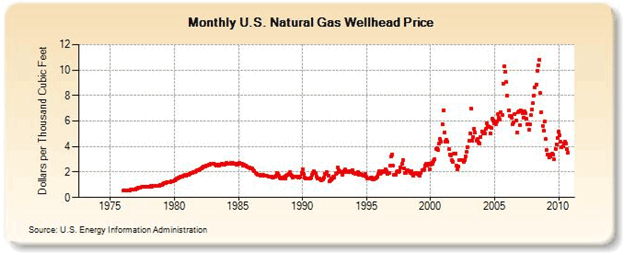
Click to Enlarge
Wind power fuel tradeoff with oil-generated electricity
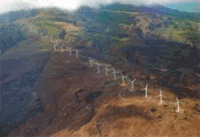
Wind farm on Maui
Another question that might be asked is how does this tradeoff compare when the electricity is generated with oil? In Hawaii, oil is the major fuel for electricity generation. Another favorable factor in Hawaii may also be that the wind generation capacity factor may be higher on these islands. A simplified cost tradeoff shows that there is indeed a cost advantage to backing up oil generation with windmills. Oil is such an expensive fuel that anything that reduces fuel consumption is well worth the cost.
The fact that oil is so expensive is the reason that it is seldom used in the continental United States for electricity generation. In Hawaii, however, there appear to be few other choices. This may change if small nuclear plants become available as a low-cost alternative.
Hydro backup
It should be noted that if hydro power is used to compensate for wind power, there is no compensating cost saving for the saved fuel. The saved fuel is the extra water that goes over the spillway and is wasted. It is cheaper to have no wind farms in this pairing and let hydro do the entire job of supplying the needed electricity. Here are some factors that limit wind generation on a hydro grid:
- Too much wind on the grid may violate the Endangered Species Act. Placing too much wind on the grid is actually a
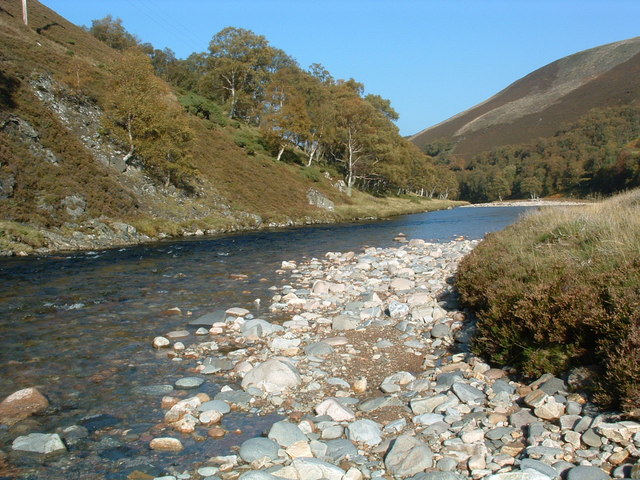
Salmon pool
concern in California, as that state is negotiating with the neighboring Bonneville Power Administration (BPA) grid for renewable energy credits to meet its self-imposed Renewable Energy Standard. In order for the BPA to help meet California's demand for wind-generated energy, it might need to decrease the hydro generation to the point that the excess water flow over the dams causes harmful effects to migrating salmon during the spawning season due to excess dissolved nitrogen [2].
- Too much wind on the grid may violate agreements to provide downstream irrigation needs. During drought situations, it may not be possible to turn down the hydro generation to let wind onto the grid and still meet irrigation needs.
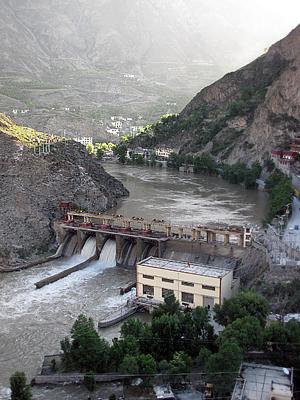
Hydro plant
If there is no cost advantage or environmental advantage to placing wind on a grid with ample hydro, one may well ask why we are doing that. The answer is that we have passed laws in many states (Washington and California, for example) that do not count existing hydro into the legal definition of renewable energy. This may be surprising to many readers, as existing hydro certainly fits the definition of being naturally replenished. Existing hydro is certainly replenished as well as new hydro would be.
The BPA grid currently has 3000 MW of potential wind energy (when the wind is blowing). Assuming the above-mentioned price of a windmill, this means that consumers at the BPA have already spent at least $5 billion for wind-energy production without any obvious benefit. This potential wind capacity is expected to double by 2012, so BPA consumers are expected to spend another $5 billion without an obvious benefit.
The bottom line is that we have allowed laws to be passed that are harmful both to our pocketbooks and to the environment. Without the benefit of these laws, wind developers would have lost their legally mandated status and there would be no windmills on grids with ample hydro.
There is no free lunch
Wind-generated electricity is not free. The cost of fuel for any power plant is just part of the cost that a consumer needs to pay. Because the fuel cost is zero does not mean that the cost of the generated electricity is zero.
This is similar to the electricity generated by hydro. The cost of the water is zero, but the hydro-generated electricity is not zero. It includes O&M costs and the cost of building the hydroelectric dam.
For a nuclear plant, the fuel cost is not zero, but it is a relatively small portion of the generation cost. It is certainly smaller than the fuel cost in a natural gas plant, where the fuel cost is about 80 percent of the generation cost.
For power providers that use oil as fuel, it appears that wind generation is worth the fuel-cost savings. Oil is not used extensively, however, because it is so expensive.
In conclusion, there appears to be no economic justification for building windmills except when low-cost alternatives are not available. This is especially true when windmills are placed on a grid with ample hydro, as there are no compensating fuel savings in that situation.
There is no free lunch.
Cost tradeoff of wind versus fuel saved
Inputs:
- A 2-MW wind turbine costs approximately $3.5 million installed.
- The O&M cost of a wind farm is approximately 20-25 percent.
- The maximum life expectancy of wind turbines is 20 years.
- The price of gas is about $4 per thousand cubic feet.
- The price of a barrel of oil is $80.
- It takes about 7.7 cubic feet of natural gas to generate 1 kWh of electricity (dividing the generation in Table 7.2a by the fuel consumption in Table 7.3a in these tables published by the U.S. Energy Information Administration ).
- It takes 0.00175 barrels of oil to generate 1 kWh of electricity (using the same tables as above).
Assumptions:
- The capacity factor of a wind farm is about 30 percent (land based).
- The a higher capacity factor of 45 percent is assumed for Hawaii.
- The average life of a wind turbine is 15 years.
- Interest costs for the wind farm are neglected.
- The cost of transmission lines are neglected.
Analysis
Cost of wind farms:
- A 1000-MW wind farm costs $1,750 million to install all the turbines (500 turbines x $3.5M per turbine).
- For a lifetime of 15 years, the costs is $116 million per year (1,750/15).
- When including O&M, this increases to $145 million/year (116 x 1.25).
Electricity generated:
- The amount of electricity that a 1000-MW wind farm is expected to produce in a year is 2,630,000 MW-hrs for a 30-percent capacity factor (1000 MW x 365d x 24 h/d x .3).
Cost of natural gas saved:
- The value of the fuel saving in the backup 1000-MW natural gas plant is $81 million/year. (2.63 x 106 MW-hrs x 7.7 cubic feet/kWh x $4/1000 cubic feet x 103 kW/MW).
Cost of oil saved in Hawaii:
- The value of the fuel saving in the backup 1000-MW oil-fired plant is $552 million/year. (2.63 x 106 MW-hrs x [.45/.3] x 0.00175 barrels/kWh x $80/barrel x 103 kW/MW).
Conclusion:
- The yearly natural gas fuel-saving cost benefit for operating a wind farm is less than the yearly cost to install and operate wind farms. There is, therefore. no economic incentive to pair a natural gas plant with a wind farm, unless the price for natural gas goes up.
- For a pairing of wind farms with oil-fired generation, there appears to be a significant savings. This is primarily due to the much higher price of oil versus natural gas for the same energy content. This is the reason oil-fired generation is not much used anywhere, except Hawaii, where there is not much other choice. At today's prices, oil is 4.5 times more expensive than natural gas for the same extracted electrical energy (.00175 barrels/kWh x $80/barrel)/(7.7 cft/kWh x $0.004/cft)=4.5
References:
- Peter Wong, manager Resource Adequacy, ISO New England Inc. "An Overview of ISO New England and Operation of the New England Electric Power Grid," given at Western New England College, Western Massachusetts Sustainability Symposium, October 24, 2009.
- Bonneville Power Administration Testimony before the Public Utilities Commission of the State of California, May 12, 2010 (See Page 8, second paragraph)

Ulrich Decher holds a PhD in nuclear engineering. He is a member of the ANS Public Information Committee and a contributor to the ANS Nuclear Cafe.




